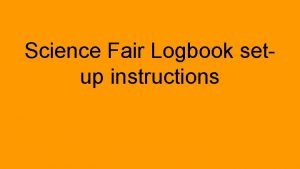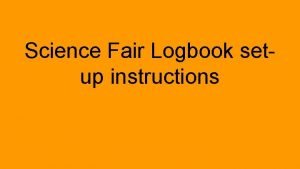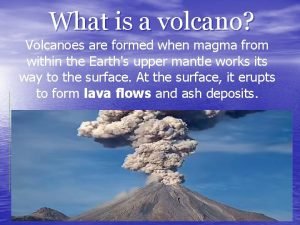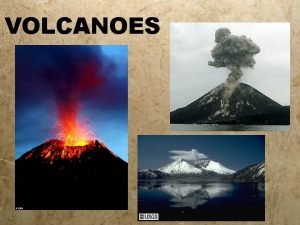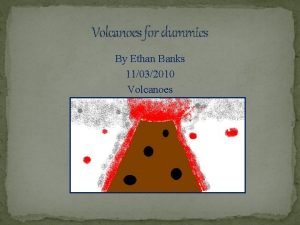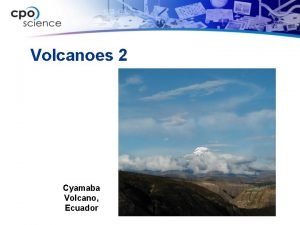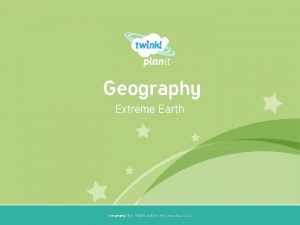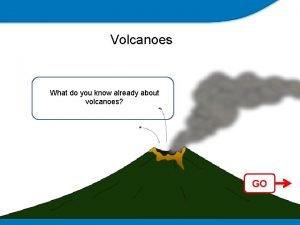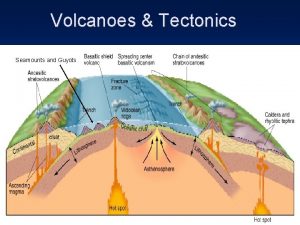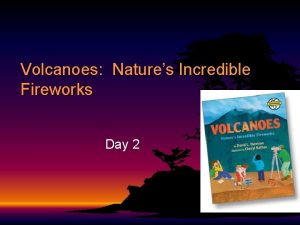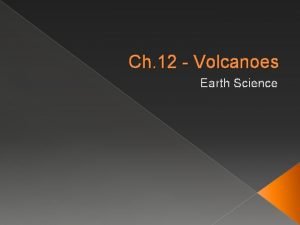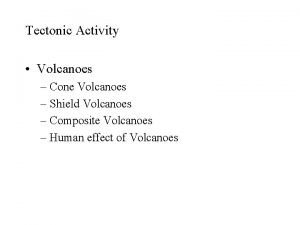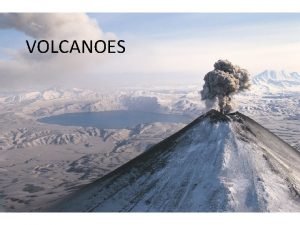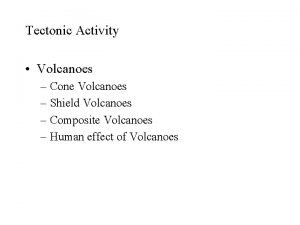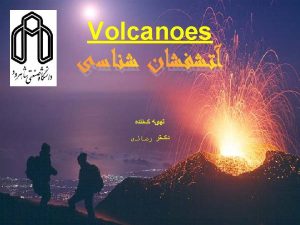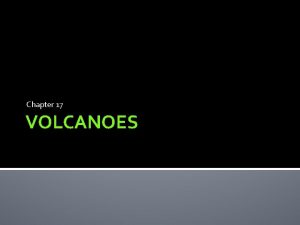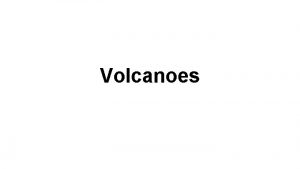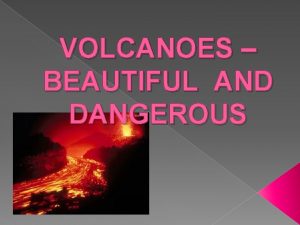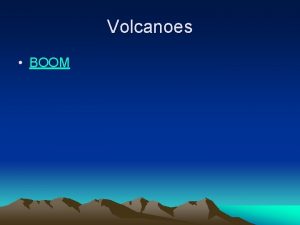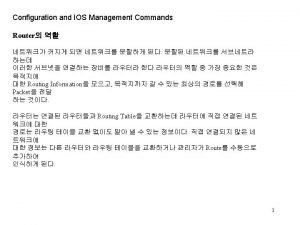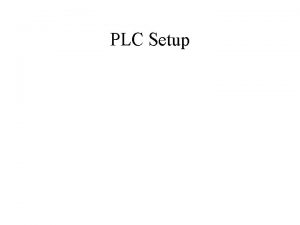Volcanoes 6 TH GRADE SCIENCE Intro Setup the














- Slides: 14

Volcanoes 6 TH GRADE SCIENCE

Intro �Set-up the next page in your journal titled Volcanoes. �Make a list of things you already know about volcanoes.

Intro Video Clips �After watching these video clips write at least 5 questions about what you saw in your journal. https: //www. youtube. com/watch? v=Be 7 o 6 BYVOz. A https: //www. youtube. com/watch? v=Wgkt. M 2 lu. Lok https: //www. brainpop. com/science/earthsystem/volcanoes/

How are volcanoes formed? �Based on your research, the video clips, and prior knowledge, turn and talk to your table about how and where volcanoes form. �After you have discussed write this down in your journal.

Volcano Flip Book �Cut out the pages of the flip book along the edges. �Staple the pages in order. �Glue the book into your journal. �As we go through the rest of the Power. Point fill out the flip book with the information you find.

Types of Volcanoes �There are 3 types of volcanoes: Composite (Strato) Volcanoes Shield Volcanoes Cinder Cone Volcanoes

Composite (Strato) Volcanoes �Formed from layers of ash, lava, and rock debris. �They can have very steep sides and be very tall. �Can grow to heights of 8000 feet or more. �Composite volcanoes erupt in an explosive manner of mostly ash, steam, and rock debris. �Lava is thick with a high viscosity. �These volcanoes can be violent and cause pyroclastic flows.

Examples of a Composite Volcano Mount St. Helens Mount Vesuvius Location: Washington Elevation: 8, 363 feet Last Erupted: July, 2010 Location: Italy Elevation: 4, 203 feet Last Erupted: 1944 Video Clip: http: //www. history. com/topics/ancienthistory/pompeii/videos/deconstructing-history-pompeii

Shield Volcanoes �Some of the biggest mountains in the world. �Can cover large areas but do not grow very tall. �Shield volcanoes are very wide and broadly shaped. �They are made up of layers of lava. �Eruptions of shield volcanoes are gentle. �The lava is thin and runny. �They have mostly lava in eruptions with very little ash.

Example of a Shield Volcano Name: Mauna Location: Hawaii Elevation: 13, 680 ft Last Erupted: 1984

Cinder Cone Volcanoes �Most common type of volcano. �They can be found on the sides of other volcanoes. �They are formed from layers of tephra/cinders (volcanic debris). �Typically they are not very tall and shaped like a cone with a crater at the summit. �Since they are smaller they have smaller eruptions. �When they erupt cinders fly into the air which can cause the eruptions to be fiery.

Example of a Cinder Cone Volcano Name: Paricutín Location: Michoacán, Mexico Elevation: 9186 feet Last Erupted: 1952

Volcano Safety and Predictions �Scientist study past volcanic eruptions to find clues about new eruptions. �Lava flows can be mapped helping people be safe. �There are warning signs such as magma gathering in the chamber that clue scientists when an eruption might occur.

Analysis Questions 1. 2. 3. 4. 5. How do volcanoes effect the surface of the Earth? How can people stay safe from volcanoes? Describe the difference between the 3 types of volcanoes. Are all volcanic eruptions dangerous? Why or why not? Do you think scientists will soon be able to totally predict when a volcano will erupt? Explain your thinking.
 Science fair logbook
Science fair logbook Science fair logbook example
Science fair logbook example Favourite subject science
Favourite subject science Chapter 1 introduction to forensic science and the law
Chapter 1 introduction to forensic science and the law How volcanoes are formed
How volcanoes are formed How are volcanoes classified
How are volcanoes classified Paboeboe
Paboeboe Ecuador
Ecuador How are volcanoes made
How are volcanoes made What do you already know about volcanoes?
What do you already know about volcanoes? Guyots
Guyots Volcanoes nature's incredible fireworks
Volcanoes nature's incredible fireworks Lithosphere definition
Lithosphere definition Chapter 8 earthquakes and volcanoes
Chapter 8 earthquakes and volcanoes How are volcanoes formed
How are volcanoes formed
